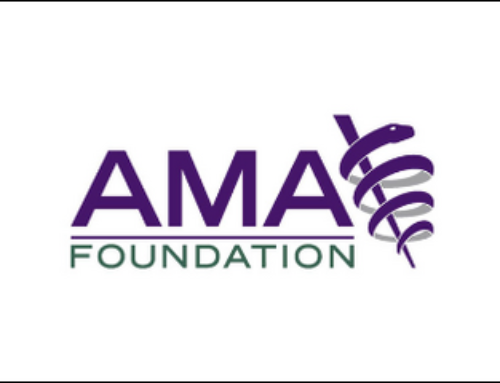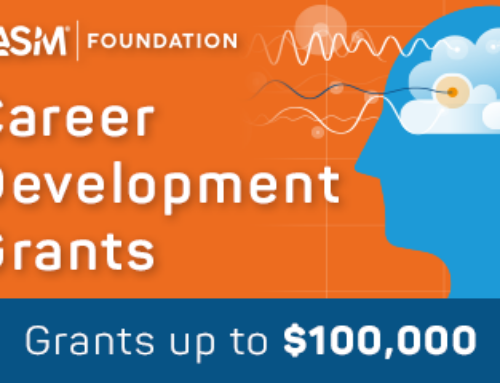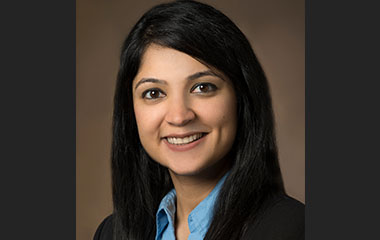 Dr. Salma I. Patel is a physician-scientist and an AASM Foundation research grant recipient whose passion for sleep medicine research and education is making a difference in the lives of her patients.
Dr. Salma I. Patel is a physician-scientist and an AASM Foundation research grant recipient whose passion for sleep medicine research and education is making a difference in the lives of her patients.
Salma I. Patel, MD, MPH, is tenure-track assistant professor of medicine at the University of Arizona and associate program director of the sleep medicine fellowship at Banner University Medical Center – Tucson. She is the recipient of the 2018 American Board of Sleep Medicine Junior Faculty Grant and alumna of the Young Investigators Research Forum.
From Clinical Nurse to Researcher
Patel’s path to sleep medicine and research is unique, as she was formerly an intensive care unit nurse and a clinical nurse research coordinator at Mayo Clinic prior to pursuing a career in medicine. She attributes her exposure to clinical translational research while she provided nursing care to critically ill patients as what led her to coordinate multiple high-risk trials including device (e.g., Total Artificial Heart, CentriMag Left Ventricular Assist System) and investigational medication (e.g., MP-125, I5NP) trials.
“These exposures made me realize the impact research can have in patient care and ignited my interest in doing my own research as a physician-scientist to help improve patient outcomes. It was only natural when I learned about and fell in love with sleep medicine that my research be focused on sleep medicine,” said Patel. “Being a nurse was an invaluable experience in my opinion as I received a deep understanding of what patients undergo both clinically and from a research standpoint by being at their bedside for 12 hours a day.”
Her experience as a clinical research nurse and passion for improving patient outcomes reinforced her goal of becoming a physician, and Patel went on to pursue a medical degree and Master of Public Health degree at the University of Arizona Medical School.
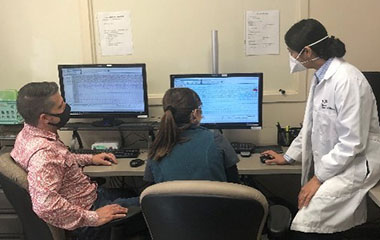
A Career in Academic Sleep Medicine
Today, Patel continues to serve her patients and the sleep community as an academic sleep medicine physician. She spends her time educating others about what healthy sleep is and how to identify and manage sleep disorders while recruiting others to the field. Her goal is to improve quality of life and functional ability at home and at work for those suffering from sleep disorders. She believes it is important to recognize that treatment of certain sleep disorders may decrease morbidity and mortality from chronic medical conditions such as cardiovascular disorders.
“Being an academic sleep medicine physician is perhaps the most gratifying position I have ever held. It gives me the ability to not only positively impact the lives of my patients but to also be actively involved with sleep medicine education for the public, undergraduate students, graduate students, medical residents and fellows,” said Patel.

Bridging the Gap as a Physician Scientist
Physician scientists like Patel are uniquely positioned to bridge the gap between important clinical questions and using science to answer those questions. “As a sleep medicine physician, many questions arise in the clinic for which answers do not always exist,” said Patel. “Being a physician scientist enables me to find these answers for myself and other clinicians asking similar questions while contributing to the science in the field of sleep medicine and ultimately improving the outcomes of patients with sleep disorders.”
Knowing that she wanted to pursue a career as a physician scientist, Patel received a scholarship to attend the AASM Foundation Young Investigators Research Forum in 2017 while she was a sleep medicine fellow at Mayo Clinic. She then went on to secure a tenure-track assistant professor appointment at the University of Arizona and was awarded the AASM Foundation 2018 American Board of Sleep Medicine Junior Faculty Grant, which is providing her protected time to work on her current mentored research project, Cardiorespiratory Interactions during Noninvasive Ventilation. The goal of her project is to study the impact of markers of ventricular repolarization in patients with obstructive sleep apnea (OSA).
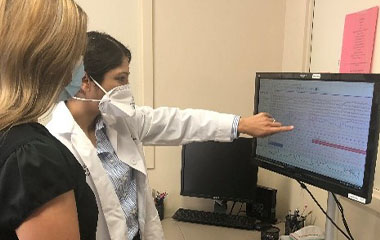 “Patients with untreated OSA have a 2-to3—fold increased risk of cardiovascular mortality when compared with individuals without OSA. Aberrant ventricular repolarization among OSA patients may contribute to this association,” said Patel. “We hypothesize that changes in ventricular repolarization associated with apnea/hypopnea events is associated with increased mortality in patients with obstructive sleep apnea and may be worsened when these patients are placed on certain forms of noninvasive ventilation.”
“Patients with untreated OSA have a 2-to3—fold increased risk of cardiovascular mortality when compared with individuals without OSA. Aberrant ventricular repolarization among OSA patients may contribute to this association,” said Patel. “We hypothesize that changes in ventricular repolarization associated with apnea/hypopnea events is associated with increased mortality in patients with obstructive sleep apnea and may be worsened when these patients are placed on certain forms of noninvasive ventilation.”
As she makes strides in her project, it has taught her many new things as an early career sleep researcher. “The project has taught me how important my mentoring and research team is for success of the project as everyone involved contributes to the project in one way or another,” said Patel. “I also learned about the responsibilities of being a principal investigator and aspects of project management.”



